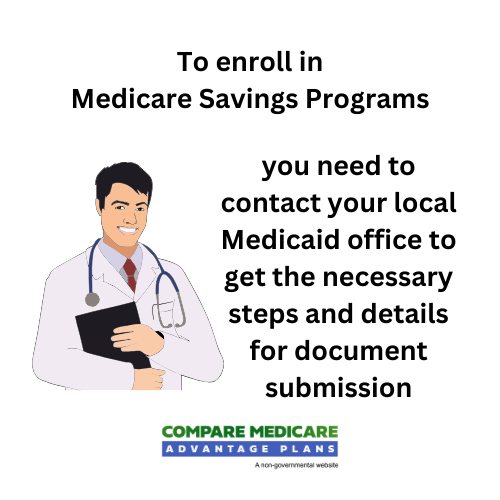Dual Eligible Medicare Medicaid Income Limits
What are the potential dual-eligible Medicare Medicaid income limits for 2025? This crucial question will likely stand at the center of obtaining comprehensive health coverage for those qualifying for both Medicare and Medicaid benefits.
This article will lay out the current income thresholds, strictly based on Federal Poverty Level guidelines, to ascertain your eligibility for dual coverage. This concise information could impact your potential healthcare benefits.
Key Takeaways
- Individuals may qualify for dual eligibility in Medicare and Medicaid by meeting specific income and asset thresholds based on the Federal Poverty Level (FPL), with ‘spend down’ options for those exceeding income limits.
- Some of the Medicare Savings Programs may assist with Medicare-related costs for low-income individuals, with various programs that could offer different income eligibility standards that will likely be determined annually.
- Special Needs Plans (SNPs) are designed to cater to individuals eligible for both Medicare and Medicaid, possibly providing coordinated benefits and coverage that could be tailored to the unique needs of dual-eligible members.
Compare Plans in One Step!
Enter Zip Code
Income Thresholds for Dual Eligibility
The path to dual eligibility might start with comprehending the income thresholds. These thresholds will likely be determined based on the Federal Poverty Level (FPL) which might set specific income limits for qualification according to federal law.
Consequently, you may still qualify for partial Medicaid benefits using the ‘spend down’ process if your income surpasses the Medicaid limit. This process could potentially offset non-covered medical expenses to meet the income eligibility requirements.
Federal statute may stipulate that those enrolled in both Medicaid and Medicare, also known as Medicare beneficiaries, may be entitled to coverage for both optional and mandatory categories.

Understanding Federal Poverty Level (FPL)
The Federal Poverty Level (FPL)could serve as an economic measure that could establish eligibility for federal benefits and programs, which may encompass those for low-income Medicare beneficiaries. This will likely be determined by considering income and family size, with the specific criteria released annually by the Department of Health and Human Services (HHS).
The FPL may also undergo updates annually to reflect changes in the economy and cost of living.
Income Limits for Dual Eligibility
Once you grasp the Federal Poverty Level, you can gain a clearer understanding of the potential income limits for dual eligibility. These limits might change based on the specific Medicare Savings Program, each could adopt different percentages of the FPL as thresholds.
Asset Considerations in Eligibility
Although income could be a significant determinant, asset limits may also influence eligibility. These potential limits will likely be set by the Centers for Medicare & Medicaid Services (CMS) and may vary by state. Not all assets may be counted, though. Certain non-countable assets may vary by state and could potentially be excluded from calculations.
These might include items like your primary home, certain types of personal property, and other resources that could be deemed exempt under certain state guidelines.
Medicare Savings Programs: A Path to Dual Eligibility
Medicare Savings Programs will likely be specifically tailored to aid individuals with limited incomes in managing certain Medicare-related costs.

There may be various categories of Medicare Savings Programs, such as:
- Qualified Medicare Beneficiary (QMB) Program
- Specified Low-Income Medicare Beneficiary (SLMB) Program
- SLMB plu
- Qualifying Individual (QI)
Enrollment in one of these Medicare Savings Programs may offer significant relief for Medicaid enrollees, potentially leading to Medicaid covering part or all of your monthly Medicare premiums. Thus, the interplay of Medicare and Medicaid could provide a comprehensive coverage net for individuals in need.
Program Categories and Income Standards
Within the potential coverage of Medicare Savings Programs, there may be various classifications, including:
- Qualified Medicare Beneficiary (QMB) Program
- Specified Low-Income Medicare Beneficiary (SLMB) Program
- Qualifying Individual (QI)
- Qualified Disabled and Working Individuals (QDWI)
Each category may have different income thresholds.
Enrollment Process for Medicare Savings Programs

To enroll in Medicare Savings Programs, you need to contact your local Medicaid office to get the necessary steps and details for document submission.
The necessary documentation may include proof of identity, proof of Medicare enrollment, and proof of income.
However, these requirements may vary by state. The State Medical Assistance office will likely be responsible for determining eligibility during the enrollment process.
Unlike some insurance programs, there may be no specific enrollment period for Medicare Savings Programs, meaning applications could be submitted at any time throughout the year.
The Interplay Between Medicare Parts and Medicaid Coverage
The collaboration between Medicare and Medicaid may be crucial for providing comprehensive healthcare coverage. Medicare will likely be responsible for the initial payment for covered services, with Medicaid potentially covering the remaining amount for services within its coverage.
Some of the potential coverage details of Medicare Part A and how Medicaid might complement this coverage could be crucial to understanding how these programs could work together to provide healthcare benefits.
Medicare Part A and B Cost Sharing with Medicaid
Medicaid will likely play a vital role in assisting with Medicare Part A and B cost-sharing. It may cover:
- The Medicare Part B premium
- A portion of Medicare deductibles
- Other cost-sharing such as the remaining 20% of the Medicare-approved amount that might not be covered by Medicare Part B
- Some copayments
Medicare and Medicaid may provide coverage for different aspects of healthcare. Here’s a breakdown of what each program might cover:
- Medicare Part A covers inpatient stays, including copayments for hospitalization.
- Medicare Part B will likely cover about 80% of the Medicare-approved amount for medical services once deductibles have been satisfied.
- Medicaid complements Medicare by providing coverage for medical expenses that might not be included in Medicare Part A and B.
These programs will likely work together to offer essential support for dual-eligible individuals, possibly helping them manage a wider range of healthcare expenses with minimal out-of-pocket costs.
Prescription Drugs Under Medicare Part D
Medicare Part D is a program that has been designed to assist with the expenses of prescription drugs, potentially offering coverage for most drugs in specific protected classes. If you’re dual eligible, you may be automatically enrolled in a Medicare drug plan unless you opt for a different plan before the enrollment deadline.

Some of the expenses related to Medicare Part D may involve higher-income individuals who could contribute a larger portion of standard Part D costs.
Navigating the Landscape of Dual Eligible Plans
Understanding and choosing the appropriate dual-eligible plan could potentially influence your healthcare coverage and costs. Special Needs Plans (SNPs) will likely play a vital role in coordinating the possible benefits for dual-eligible individuals, which may offer:
- Care coordination services
- Customized benefits
- Provider options
- Covered medications
When evaluating the potential dual-eligible plans, it’s important to explore the available D-SNPs, which may enroll individuals eligible for both Medicare and Medicaid and understand these plans’ specific coverages and eligibility criteria.
Choosing the Right Plan for Your Needs
Choosing the right dual-eligible plan will likely demand a meticulous evaluation of your healthcare needs and financial circumstances. Your health condition could significantly influence the choice of a dual-eligible plan, as dual-eligible members may have compromised health status and heightened healthcare requirements.
In addition, your financial circumstances could also influence the selection of a dual-eligible plan, as individuals with lower incomes may be eligible for partial or full Medicaid benefits based on state Medicaid eligibility criteria.
When selecting a dual-eligible plan, you may want to consider the potential benefits offered, eligibility for Medicaid based on income, health conditions, and qualification for Supplemental Security Income. You may also want to choose a plan that could offer a range of doctor choices and extra benefits that may be tailored to your specific needs.
Understanding the Role of Special Needs Plans (SNPs)
Special Needs Plans (SNPs) are unique Medicare Advantage coordinated care plans that have been designed to meet the needs of individuals eligible for both Medicare and Medicaid.

Dual Eligible Special Needs Plans (D-SNPs) are specifically tailored to enroll and provide customized care for these beneficiaries. SNPs are classified into Chronic Condition SNPs (C-SNPs), Dual Eligible SNPs (D-SNPs), and Institutional SNPs (I-SNPs), with each tailored to cater to distinct health requirements and living circumstances.
SNPs facilitate coordination between Medicare and Medicaid benefits by possibly ensuring the provision of Medicare-covered services and coordinating the delivery of care. They may also customize certain benefits to address the specific requirements of dual-eligible individuals, possibly providing a more integrated approach to healthcare management.
Potential Benefits for Dual Eligibles
Attaining dual eligibility may provide access to extra benefits that could substantially improve your healthcare coverage.
For instance, Medicaid might extend coverage for skilled nursing facility care beyond the 100-day limit for dual-eligible individuals. Some plans may also offer coverage for eyeglasses and hearing aids.
Medicaid will likely offer coverage for:
- Long-term services and support (LTSS)
- Behavioral health services
- Doctor visits
- Inpatient and outpatient hospital services
- Mental health services for dual-eligible individuals
How Changes in Circumstances Could Affect Dual Eligibility
Staying alert to possible changes in income, assets, or health status may be necessary, as these potential factors could influence your dual eligibility. Any changes should be promptly reported to the State Medical Assistance office to ensure you can continue to receive the appropriate level of support and benefits. Modifications in income or assets should be communicated to the state Medicaid agency promptly.

Changes in income could have a substantial impact on eligibility. A possible increase in income could surpass the thresholds for dual eligibility, which might result in a reduction of benefits or loss of Medicaid coverage.
Similarly, potential changes in assets may result in the loss of dual eligibility if they surpass the limits set by the Medicaid program.
Moreover, some of these alterations in health status could influence Medicaid coverage and possibly impact the coordinated services and expenditure patterns that may be offered by both Medicaid and Medicare.
Maximizing Healthcare Coverage While Minimizing Costs
By understanding dual eligibility’s complexities and choosing the right plan, you could potentially optimize your healthcare coverage and possibly reduce your out-of-pocket costs. By choosing the appropriate dual-eligible plan, you may be able to integrate Medicare and Medicaid benefits, which may result in decreased costs and improved financial certainty for healthcare services.
Furthermore, Special Needs Plans (SNPs) may also contribute to optimizing healthcare coverage and potentially reducing expenses for dual-eligible members by utilizing strategies such as capitated payments from both Medicare and Medicaid, information sharing, and customizing benefits that could cater to the specific needs of particular populations.
Some of the Medicare Savings Programs may also assist dual-eligible members in lowering certain Medicare drug plan expenses, including premiums, deductibles, and coinsurance. They may even cover the Medicare Part B premium, which could result in significant savings for eligible individuals.
Summary
Navigating the complexities of dual eligibility for Medicare and Medicaid might be daunting, but with the right resources and understanding, you could potentially maximize your healthcare coverage while minimizing costs. By understanding the income thresholds, selecting the right Medicare Savings Programs, and leveraging the potential benefits of Special Needs Plans, you could ensure that you may be receiving the most comprehensive coverage possible.
Remember, possible changes in income, assets, or health status could affect your eligibility, so it’s essential to stay vigilant and report any changes promptly. With the right guidance and understanding, you can navigate the healthcare landscape with confidence.
Frequently Asked Questions
→ What is dual eligibility?
Dual eligibility refers to individuals who may be enrolled in both Medicaid and Medicare, which might include low-income households and those with specific medical needs. This may allow them to access additional healthcare benefits and coverage.

ZRN Health & Financial Services, LLC, a Texas limited liability company



